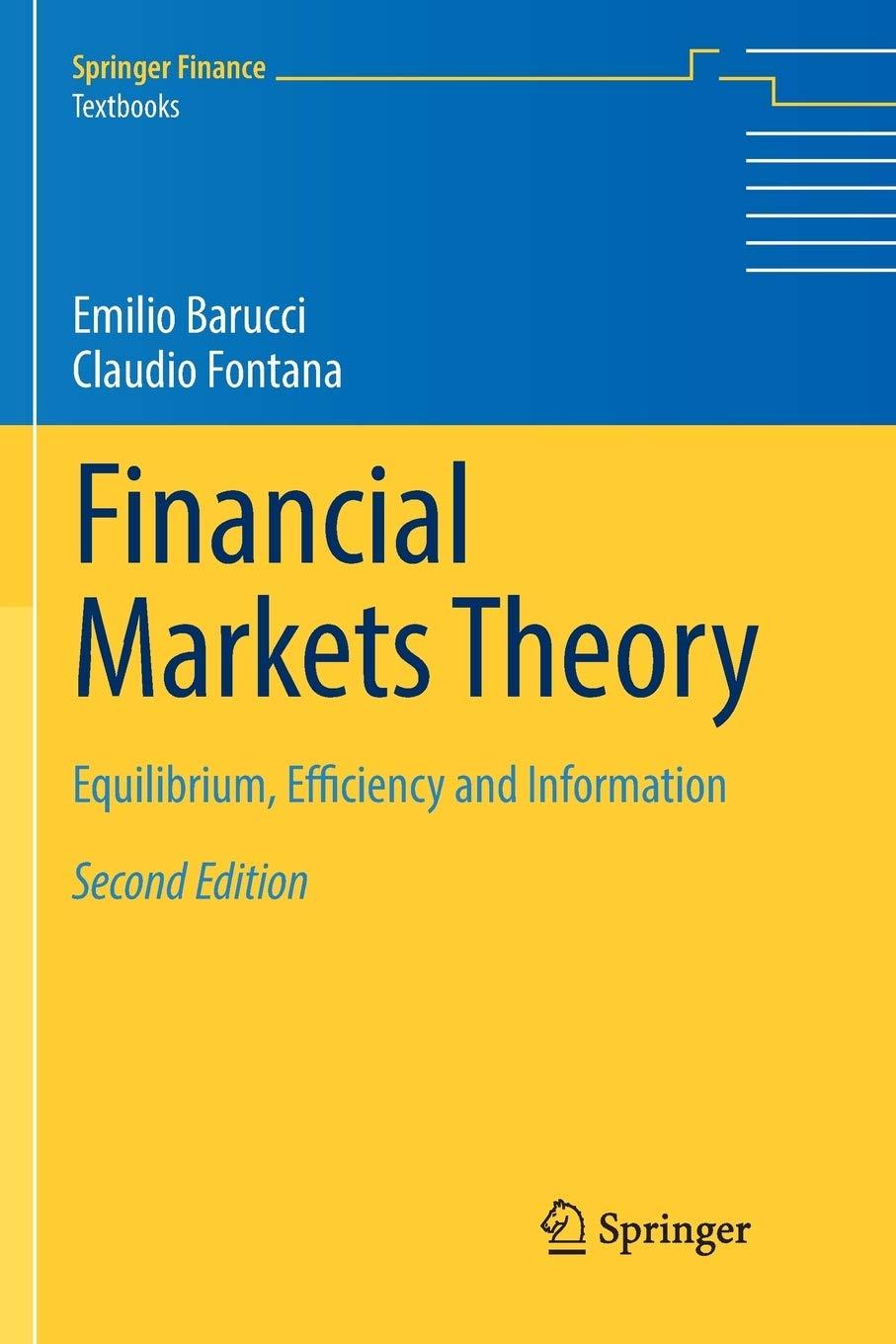In this exercise, we prove Proposition 9.9. (i) As a first step, show that relation (9.23), suitably
Question:
In this exercise, we prove Proposition 9.9.
(i) As a first step, show that relation (9.23), suitably rewritten in terms of the optimal return \(\left(r_{t}^{*}\right)_{t=1, \ldots, T}\) process, implies that
\[\mu_{r}=-\log \delta+\varrho \mu_{c}-\frac{\gamma \sigma_{r}^{2}}{2}-\frac{\gamma \varrho^{2} \sigma_{c}^{2}}{2}+\gamma \varrho \sigma_{c r}\]
(ii) Using part (i) of the exercise together with relation (9.23) with respect to the risk free asset with return \(r_{f}\), deduce that the equilibrium risk free rate \(r_{f}\) is given by (9.33).
(iii) Suppose furthermore that \(\left(\log \left(c_{t+1}^{*} / c_{t}^{*}\right), \log r_{t+1}^{1}, \ldots, r_{t+1}^{N}\right)\) are jointly normally distributed conditionally on \(\mathscr{F}_{t}\), for all \(t=0,1, \ldots, T-1\). Deduce that asset risk premia satisfy relation (9.34).
Step by Step Answer:

Financial Markets Theory Equilibrium Efficiency And Information
ISBN: 9781447174042
2nd Edition
Authors: Emilio Barucci, Claudio Fontana





